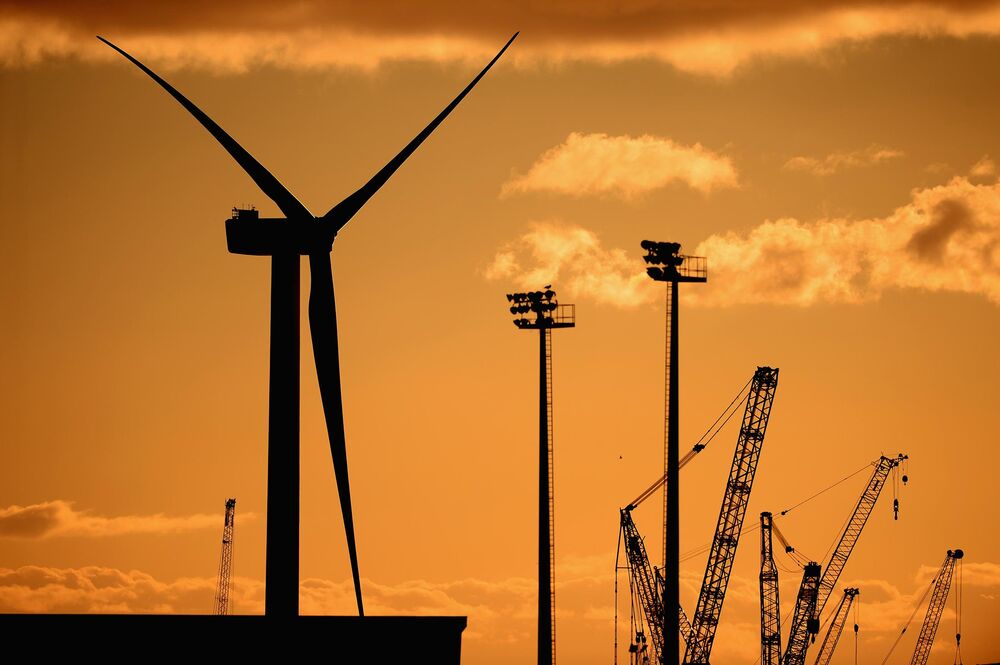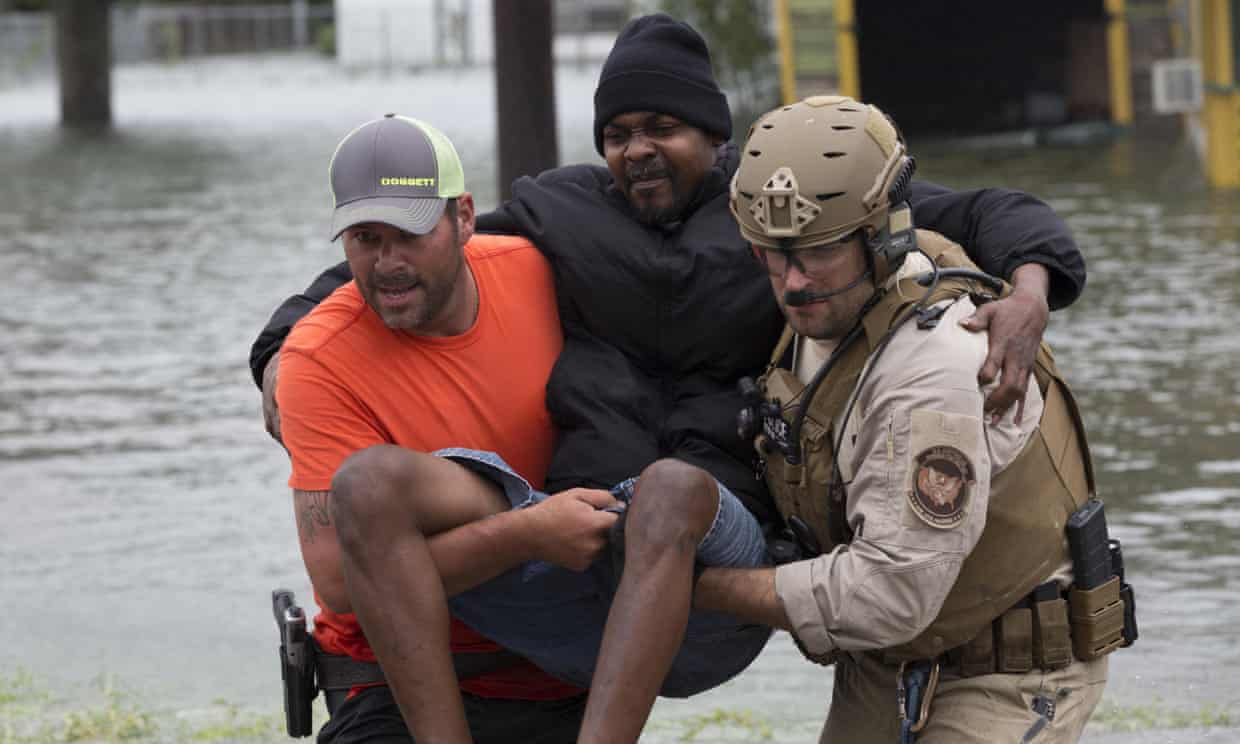Washington Post
After Irma, Florida prepares for days — and maybe weeks — without power
Patricia Sullivan, Mark Berman and Katie Zezima September 12, 2017
Irma leaves millions of Florida residents without electricity
 As of Tuesday, Sept. 12, millions of Florida residents were still without power in the wake of Hurricane Irma. Here’s a look at the areas hit hardest by outages. (Monica Akhtar/The Washington Post)
As of Tuesday, Sept. 12, millions of Florida residents were still without power in the wake of Hurricane Irma. Here’s a look at the areas hit hardest by outages. (Monica Akhtar/The Washington Post)
CAPE CORAL, Fla. — Millions of Floridians grappled with the aftermath of Hurricane Irma on Tuesday, confronting a sweltering reality: Nearly half of Florida still lacked electricity, and for some of them, the lights might not come back on for days or even weeks.
“We understand what it means to be in the dark,” said Robert Gould, vice president and chief communications officer for Florida Power and Light (FPL), the state’s largest utility. “We understand what it means to be hot and without air conditioning. We will be restoring power day and night.”
But, he acknowledged: “This is going to be a very uncomfortable time.”
Across the nation’s third most-populous state, that discomfort played out in homes that were silent without the usual thrum of perpetual air-conditioning. It meant refrigerators were unable to cool milk, laundry machines were unable to clean clothes and, for the particularly young and old, potential danger in a state where the temperatures can range from warm to stifling.
Even for those who had power, some also were struggling to maintain cellphone service or Internet access, sending Floridians into tree-riddled streets in an effort to spot a few precious bars of signal to contact loved ones.
“It’s a mess, a real mess. The biggest issue is power,” said Bill Barnett, mayor of Naples, on Florida’s Gulf Coast. “We just need power. It’s 92 degrees and the sun is out and it’s smoking out there.”
Utility companies made progress as they undertook a massive recovery effort, restoring power to some. At its peak, the Department of Homeland Security said about 15 million Floridians — an astonishing three out of four state residents — lacked power.
Throughout the day Tuesday, state officials gradually lowered the number of customers without power, dropping it to 4.7 million by Tuesday evening from 6.5 million a day earlier. Because each power company account can represent multiple people, the sheer number of residents without electricity was massive: Going by the Homeland Security estimates, at one point Irma had knocked out power to one out of every 22 Americans.
It would take some time before all of them had electricity again. Duke Energy Florida said it would restore power to most customers by Sunday, a week after Irma made its first landfall in Florida. Some harder-hit areas could take longer due to the rebuilding effort.
Gould said that FPL, which powers about half of the state, expected customers on Florida’s East Coast to have power back by the end of the weekend. People in western Florida, closer to Irma’s path, should have it back by Sept. 22. That estimate does not include places with severe flooding or tornado damage, he said, and those areas could also face a longer wait to be able to switch on the lights.
As Irma swept in, concern about a child, a respirator, and a battery
17-month-old Lena was born with a defective diaphragm and needs a ventilator to breathe. Her family moved across the country in 2016 so she could get the best care available, and only recently settled into their own apartment after almost a year spent in the hospital. But Hurricane as Irma moved in, they took shelter back at the hospital, knowing a power cut could endanger Lena’s life.
Floridians reacted to the outages eclectically. Some welcomed the absence of perpetual air-conditioners. Others flocked to their local malls for a respite from the heat.
“There’s no power at home, so we might as well just stay here and stay cool,” Amanda Brack, who was with her son, Gavin, said while walking through a Brookstone at the Galleria shopping mall in Fort Lauderdale.
Blake Deerhog had walked to the mall from his powerless and steamy apartment in nearby Victoria Park, trekking some 20 minutes in the stifling heat and humidity after he Googled and learned it would be open.
“This is definitely better than being back at my apartment,” he said, adding that he planned to spend the afternoon there.
The outages also caused rising alarm in some places. Here in Cape Coral, an assisted care facility for patients with dementia and memory impairment that sheltered in place during the storm went without power for three days, as elderly patients suffered in the rising heat.
The southwest Florida facility, Cape Coral Shores, had 20 patients stay during the storm as part of an agreement with state and local officials because the emergency shelters it would normally use were both evacuated as Irma approached. Power at the facility went out, and it stayed out, even as homes and businesses all around it saw their lights come back on.
As the indoor temperature climbed to the mid-80s Wednesday morning, humidity made the hard-surfaced floors slick with condensation. Patients gathered in a small day room to catch a slight breeze from screened windows. A handful of small fans powered by a borrowed generator were all that kept the situation from devolving into a medical emergency, said Dan Nelson, Cape Coral Shores’ chief operating officer.
“People here are fragile,” Nelson said, adding that air-conditioning in such facilities is a medical necessity. “This is not just about comfort, it’s about safety. We have magnet door locks that don’t work, fire suppression equipment whose batteries have run out, assisted bed lifts that don’t work. And the temperatures today and tomorrow are headed back to the mid-90s.”
A state emergency official said Wednesday afternoon he had found a large generator and 50 gallons of gas for the facility, but there was no need: The power came back on.
While the Sunshine State was the hardest hit by the outages, they extended to the other states Irma raked as it headed north. Hundreds of thousands lost power in the Carolinas, Alabama and Georgia, where at one point 800,000 were experiencing outages on Tuesday, though that number declined during the day.
The deteriorating storm once known as Hurricane Irma — classified Tuesday as a post-tropical cyclone — grazed onward through the Mississippi Valley, losing essentially all of its prior strength but still drenching some areas with rainfall.
Across the southeast, even as people acknowledged that they had dodged the worst possible hit from Irma, they were still left to contend with destroyed homes, flooded cities, swollen rivers, canceled flights and debris in the streets.
The city of Jacksonville, Fla., remained flooded after the St. Johns River overflowed so severely the day before that it forced residents from their homes. Charleston, S.C., city officials said the intense flooding there on Monday closed more than 111 roads, most of which had reopened Tuesday.
Authorities said they were investigating several fatalities that came since the storm made landfall, though it was not clear how many were directly due to the storm.
Among them were a 51-year-old man in Winter Park, Fla., outside Orlando, who police said was apparently electrocuted by a downed power line in a roadway. In Georgia, the Forsyth County Sheriff’s Office said a 67-year-old woman was killed when a tree fell on her car; the mayor of Sandy Springs said a 55-year-old man was killed when a tree fell on the bedroom where he was sleeping. In other cases, fatal car crashes claimed lives as the storm loomed.
[Why Irma wasn’t far worse]
In Key West, it remained unclear when power, cellphone service or supplies would be available again.
“What you have on hand is rationed to make sure you can get through,” said Todd Palenchar, 48, noting that his supplies of food and water are designed to last for a week. “You don’t know how long it’s going to be.”
Palenchar said he is used to camping and roughing it, but his main concern right now is his property.
“I’ve already posted signs where I’m at, ‘Looters will be shot, no questions asked,'” he said as he pulled up his shirt to reveal a .380 caliber pistol.
As Irma tore through the Caribbean and approached the Keys last week, authorities had ordered millions in Florida to evacuate and, in some cases, ordered them to hit the road again as the storm’s path wobbled. On Tuesday, officials slowly began letting those people return home.
In Monroe County, which includes the Florida Keys, and other places that let residents back, officials warned that many areas are still without power, cellphone reception is questionable and most gas stations remain shut.
Miami-Dade Mayor Carlos Gimenez said about half of the county’s traffic signals were out. Broward County Mayor Barbara Sharief said the number was closer to 45 percent of traffic signals there. Across the state, the explanations for the outages were visible alongside the road.
“It’s a lot of trees and power lines and snapped poles,” said Kate Albers, a spokeswoman for Collier County, which stretches across southwestern Florida and includes Marco Island, where Irma made her second landfall.
“I can tell you from driving around you see lines down all over the place,” Albers said. “You see trees thrown through power lines and you’ll see an occasional pole.”
The high number of outages across Florida were due largely to the storm’s massive size, said Ted Kury, director of energy studies for the Public Utility Research Center at the University of Florida.
“For a significant period of time, the entire state was under a hurricane warning,” Kury said. “Normally it comes through, sometimes it comes through fast and sometimes it comes through slowly. But this one hit pretty much everybody.”
White House warns Florida that power could be out for ‘coming weeks’
With millions in Florida without electricity, White House national security adviser Tom Bossert described “the largest ever mobilization of line restoration workers in this country” on Sept. 11, but cautioned that power could be down in homes for weeks.
Kury was among those who did not lose power but did lose Internet, cable and cellphone service, so he and his wife had to walk to the next development before his wife got enough signal to text their oldest son and her parents.
Storms that rip down power lines are frequently followed by questions about why more power lines are not buried underground, away from punishing winds.
Cost is one factor. A 2012 report for the Edison Electric Institute, a trade association representing investor-owned electrical utilities, found that it can be five to 10 times more expensive to put lines underground — otherwise known as “undergrounding” — than to hang them overhead.
The utilities also weigh issues such as how much cost they can pass on to their customers and the aesthetics of overhead wires, Kury said, noting that there is no uniform policy for power companies because diverse regions have different needs.
“It’s kind of a misstatement when folks say undergrounding power lines protects them from damage,” Kury said. “What it really does is insulates them from damage from wind events and flying debris. But it makes them more susceptible to things like flooding and things like storm surge.”
He added: “If you’re in an area where your biggest risk to the infrastructure is storm surge and flooding, putting the lines underground can actually make them more susceptible to damage and not less.”
Florida utility companies embarked upon a massive response effort to get the lights back on. Gould, the spokesman for FPL, said the company had dispatched 20,000 workers to work day and night restoring power, first to critical care infrastructure — like hospitals and 911 systems — and then to feeders that send juice to the most customers. Finally, they get to individual neighborhoods.
In St. Petersburg, where gas-powered generators had growled through the night, residents lit their way with battery-powered lanterns, flashlights and tea lights.
“We’ve run out of power before,” said Jeanne Isacco, 71, reaching for her walker to stand and punctuate her point. “Why do you think we live here? Excuse me! We know it’s hot.”
Berman and Zezima reported from Washington. Darryl Fears in St. Petersburg, Leonard Shapiro in Fort Lauderdale, Camille Pendley in Atlanta, Dustin Waters in Charleston, Kirk Ross in Raleigh, Scott Unger in Key West, Fla., and Brian Murphy, Angela Fritz and Carol Morello in Washington contributed to this report, which was updated throughout the day.

 “When the sun finally emerged, we went and sat on the back patio to try to figure out what we wanted to do,” said Schoellkopf whose home about 30 minutes outside of Houston did not sustain major damage. “Looking down at our list, it was every third or fourth person that had some sort of damage.”
“When the sun finally emerged, we went and sat on the back patio to try to figure out what we wanted to do,” said Schoellkopf whose home about 30 minutes outside of Houston did not sustain major damage. “Looking down at our list, it was every third or fourth person that had some sort of damage.” The couple’s wedding photographer, Bryan Anderson, evacuated from his flooded home with only a travel bag, his camera and two hard drives with wedding photos.
The couple’s wedding photographer, Bryan Anderson, evacuated from his flooded home with only a travel bag, his camera and two hard drives with wedding photos. The new bride had been planning to sell her leftover wedding decorations, including tablecloths, centerpieces, candles and more, online.
The new bride had been planning to sell her leftover wedding decorations, including tablecloths, centerpieces, candles and more, online. “Being a recent bride myself, I understand that it’s one day that is your special day that you plan on, maybe from even as a little girl,” she told ABC News. “There’s women who have worked tirelessly like I had and now all their hard work is gone.”
“Being a recent bride myself, I understand that it’s one day that is your special day that you plan on, maybe from even as a little girl,” she told ABC News. “There’s women who have worked tirelessly like I had and now all their hard work is gone.”
 As of Tuesday, Sept. 12, millions of Florida residents were still without power in the wake of Hurricane Irma. Here’s a look at the areas hit hardest by outages. (Monica Akhtar/The Washington Post)
As of Tuesday, Sept. 12, millions of Florida residents were still without power in the wake of Hurricane Irma. Here’s a look at the areas hit hardest by outages. (Monica Akhtar/The Washington Post) In 2010, a worker monitors water in Talmadge Creek, near the Kalamazoo River as oil from a ruptured pipeline, owned by Enbridge Inc., is attempted to be trapped by booms. CREDIT: AP Photo/Paul Sancya
In 2010, a worker monitors water in Talmadge Creek, near the Kalamazoo River as oil from a ruptured pipeline, owned by Enbridge Inc., is attempted to be trapped by booms. CREDIT: AP Photo/Paul Sancya
 A general view of the worlds largest and most powerful offshore wind turbine at Fife Energy Park on November 4, 2013 in Methil, Scotland. Photographer: Jeff J Mitchell/Getty Images
A general view of the worlds largest and most powerful offshore wind turbine at Fife Energy Park on November 4, 2013 in Methil, Scotland. Photographer: Jeff J Mitchell/Getty Images Hurricane Irma seems dead set on targeting Donald Trump’s properties.
Hurricane Irma seems dead set on targeting Donald Trump’s properties. US CBP Air and Marine Operations aircrew evacuate stranded residents trapped by flood waters in the aftermath of Hurricane Harvey. Photograph: Donna Burton/Zuma/Avalon.red
US CBP Air and Marine Operations aircrew evacuate stranded residents trapped by flood waters in the aftermath of Hurricane Harvey. Photograph: Donna Burton/Zuma/Avalon.red Smoke obscures much of the Pacific Northwest on Sept. 6, 2017. NASA / Goddard, Lynn Jenner
Smoke obscures much of the Pacific Northwest on Sept. 6, 2017. NASA / Goddard, Lynn Jenner
 William Campbell | Corbis News | Getty Images. Sustainable Energy takes a look at the nuts and bolts of wind power.
William Campbell | Corbis News | Getty Images. Sustainable Energy takes a look at the nuts and bolts of wind power.